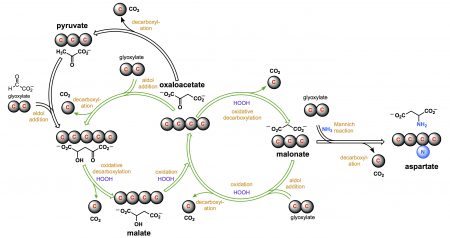January 24, 2018 – How can scientists look back in time and tell us what it was like here on this planet over 4 billion years ago? How can they possibly know the chemistry of Earth’s early oceans and atmosphere?
Current scientific perspective argues that early Earth was an RNA world. RNA stands for ribonucleic acid, the kid brother of DNA, the molecule of life here on the planet today. And according to the theory, the RNA molecule spontaneously organized prior to the arrival of DNA. RNA, like DNA, self-replicates. And RNA interacts today with proteins in our cells. But according to the hypothesis, back in the beginning, facilitated the development of proteins. From there the RNA along with its created proteins went on to develop DNA. The justification for the theory can be found in the structure of RNA which looks like half of the helical ladder that is DNA. So it sort of makes logical sense that RNA facilitated by proteins conjoined to become the first DNA molecule.
But not so fast states Ram Krishnamurthy, Associate Professor of Chemistry, at The Scripps Research Institute in California. What if life came about from chemistry that preceded the appearance of the RNA molecule? Krishnamurthy, a co-author of a new study published this month in Nature Communications, argues that “if you focus on the chemistry, the questions of origins of life become less daunting.”
So what is the chemistry he’s talking about?
Remember the expression when life sends you lemons, make lemonade. Well it appears that life may have come from chemistry similar to fake lemon juice. Called the citric acid cycle, it is present in all life today performing as the biochemical hub of every living cell whether in fungi or us. It is the essential chemistry behind glycolysis, the chemical process that combines glucose with oxidation to produce carbon dioxide (CO2). The citric acid cycle, in doing this, releases the energy stored within a cell.

Up to now scientists had conjectured that the molecules of life, RNA, and DNA, needed to exist way back when Earth was very young. But Krishnamurthy and his colleagues argue that it was chemical cycles that were needed for life to evolve in Earth’s early environment, one that would have been far too toxic for RNA and DNA to thrive.
In the article, published in the scientific journal Nature Communications on January 8, 2018, the authors write about protometabolic cycles as predating biological ones. They identify two: HKG and malonate. When combined, these cycles turn into a primitive version of the citric acid cycle as we know it today. In the press release that accompanied publication of the research, it states, “The two cycles use reactions that perform the same fundamental chemistry of a-ketoacids and b–ketoacids as in the citric acid cycle.” The byproducts of the reaction are carbon dioxide (CO2) and amino acids. And although the chemistry may be very similar to the citric acid cycle in our cells today, the molecules derived from amino acids back then would have been far different from what is present today. One molecule, glyoxylate, seems to have played an important part because it appears as part of the citric acid cycle in both early Earth and the present.
So the argument goes; that life originated as a byproduct of an early chemistry akin to artificial lemon juice, that begat complex organic molecules. Under such a scenario it is likely that RNA and DNA arose in tandem, the byproduct of the same chemical process that hides in plain sight within us today, the citric acid cycle (seen below).
There are implications from this research to the search for life elsewhere in the Solar System and our Universe. Should the experiments put on rovers on future visits to Mars or other off-world destinations check for the presence of HKG and malonate cycles rather than RNA, DNA, or primitive eukaryotic cells? Would the presence of these chemical precursors to the citric acid cycle tell us that conditions for life’s emergence exist elsewhere and are not limited to Earth alone?

















